
In Mexico, after the Feast of the Virgin of Guadalupe on December 12, it is time to prepare, full speed, for Christmas. Las Posadas, literally, “The Inns”, celebrated from December 16 until Christmas Eve, recreate the journey of the Virgin Mary and Saint Joseph to Bethlehem, and the negative response of the inn keepers (hence the name), in the form of a song; in the last verse, the inn-keepers recognize the Holy Family, and the song ends with the keepers opening the doors to the stable, and a joyful celebration. Posadas, as well as Pastorelas (Christmas pageants), started in Spanish colonial times when Catholic priests prepared short plays to illustrate biblical events to the newly converted indigenous people in Mexico – who were just learning Spanish – similar to the Medieval plays in Europe used to educate the mostly illiterate congregations of those times. Nowadays, a lively gathering which includes piñatas, music, and of course, seasonal food, has become a big part of any Posada.
Christmas Fairs and Street Markets complete the festive scene; people may shop for fruit and other ingredients to fill piñatas or prepare a pot of ponche navideño (Christmas punch); purchase ornaments, and arts & crafts supplies, to decorate their homes; and eat all sorts of savoury snacks (antojitos), as well as sweet treats, such as buñuelos, a fried pastry sprinkled with sugar and served with syrup.
Different kinds of fried dough have been known since the times of Ancient China, Egypt and Rome, and examples in every continent may be named; from Achappam in India, to French Beignets and Chinese Youtiao, fried dough treats have developed in parallel in many cultures for centuries. In Canada and the United States, indigenous communities have prepared fried breads since at least the 18th century, such as the large flat oval shapes called elephant ears or, in Canada, Beaver Tails™; originally sold near Ottawa at a small stall, forty two years ago, currently Beaver Tails™ is a transnational company with many branches, including in Mexico and at Toronto’s Harbour Front (photo below, left); these fried treats are sold topped with the traditional sugar and cinnamon, or toppings from a large selection, for example, with maple flavoured spread and a swirl of chocolate sauce (photo below, right):


Buñuelos came to Mexico from Spain, where the Moorish had consumed them at least since the 11th Century, shaped as balls that expanded and became hollowed inside, for which they are known as buñuelos de viento (wind buñuelos). In Mexico there are buñuelos shaped from dough as balls, too, as well as rings, flat discs (similar to Canadian Beaver tails, but thinner), and “de molde” (from a mould), in which a metal mould is dipped in a lose batter that covers it; the batter masking the mould gets released from it when immersed in hot oil, rendering a pretty shape, as shown below:

In the Mexican state of Oaxaca, the fried flat and thin discs are traditional around the Feast of La Virgen de la Soledad, Our Lady of Solitude, patron saint of Oaxaca (December 18), and all through the Christmas season. They are sprinkled with sugar tinted in red, and served with a bowl of piloncillo (raw sugar) syrup. It is also a tradition to break the clay bowl at the end of the meal, for an auspicious fortune:
These buñuelos are very popular in Mexico City, too (minus the bowl breaking!), sold outside churches and at outdoor markets during the Christmas season. This type of buñuelo is called “de rodilla” – “on the knee” because they are often shaped by covering one’s knees with a towel and pulling a portion of dough placed on the towel with the hands, using the knee as a working surface, until the dough becomes almost see-through. I often enjoyed these Christmassy treats in Mexico, and now that I live in Canada, I occasionally make them, but I use a bowl turned upside down in lieu of my knee, and then finish the discs to paper-thin perfection with my lauded good-ol’ rolling pin.
Fried Pastries with raw sugar syrup –
Buñuelos con miel de piloncillo
Printable recipe: Fried Pastries – Buñuelos
Ingredients
¾ cup water
¼ tsp baking soda
½ tsp orange blossom water, or vanilla
2 cups flour
1 egg
1 tbsp sugar, plus more, for sprinkling
1 tbsp lard, or margarine
Oil or lard, for frying
For the syrup:
1 cone (230 g) piloncillo or raw sugar
1 stick cinnamon
1 strip orange rind (optional)
1 ½ cups water
Place water, orange blossom (or vanilla) and baking powder in a small pan:
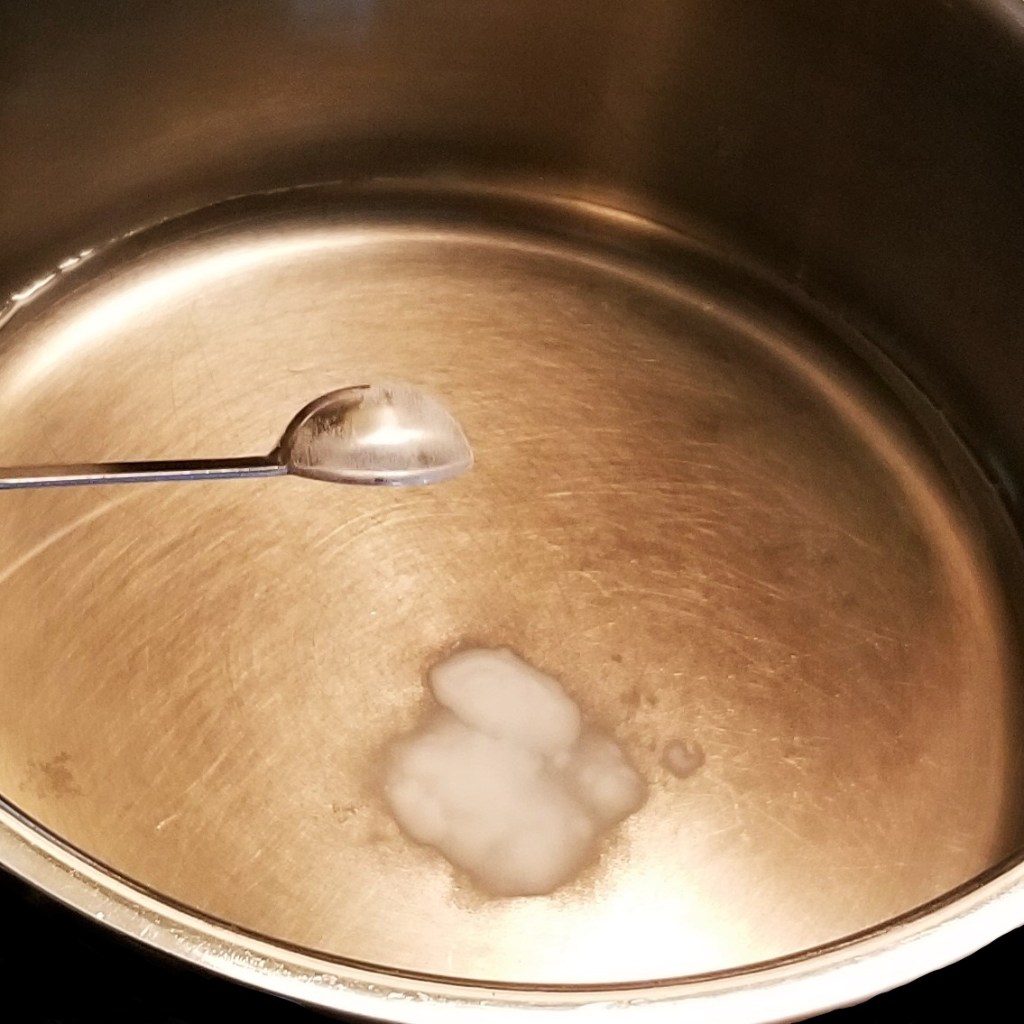
Bring to boil, then remove from heat and reserve.
Place the flour in a large mixing bowl, making a depression in the centre (photo below, left); add egg, sugar and lard (or margarine) to the centre of the bowl (photo below, right):
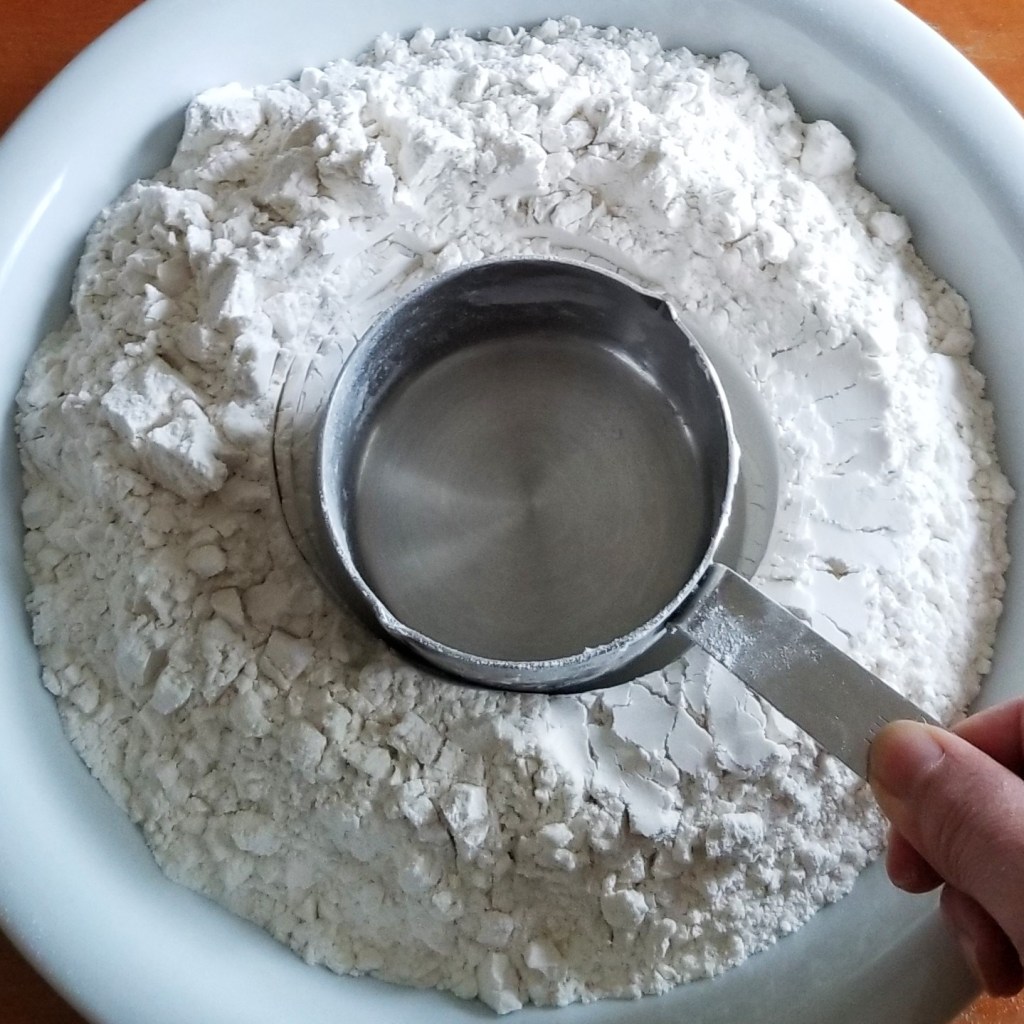

Incorporate with a spatula, while gradually adding the reserved hot liquid (photo below, left); finish mixing with hands until a soft and slightly sticky dough is formed. Kneed for a couple of minutes, until it does not stick to the bowl and may be formed into a ball (photo below, right):

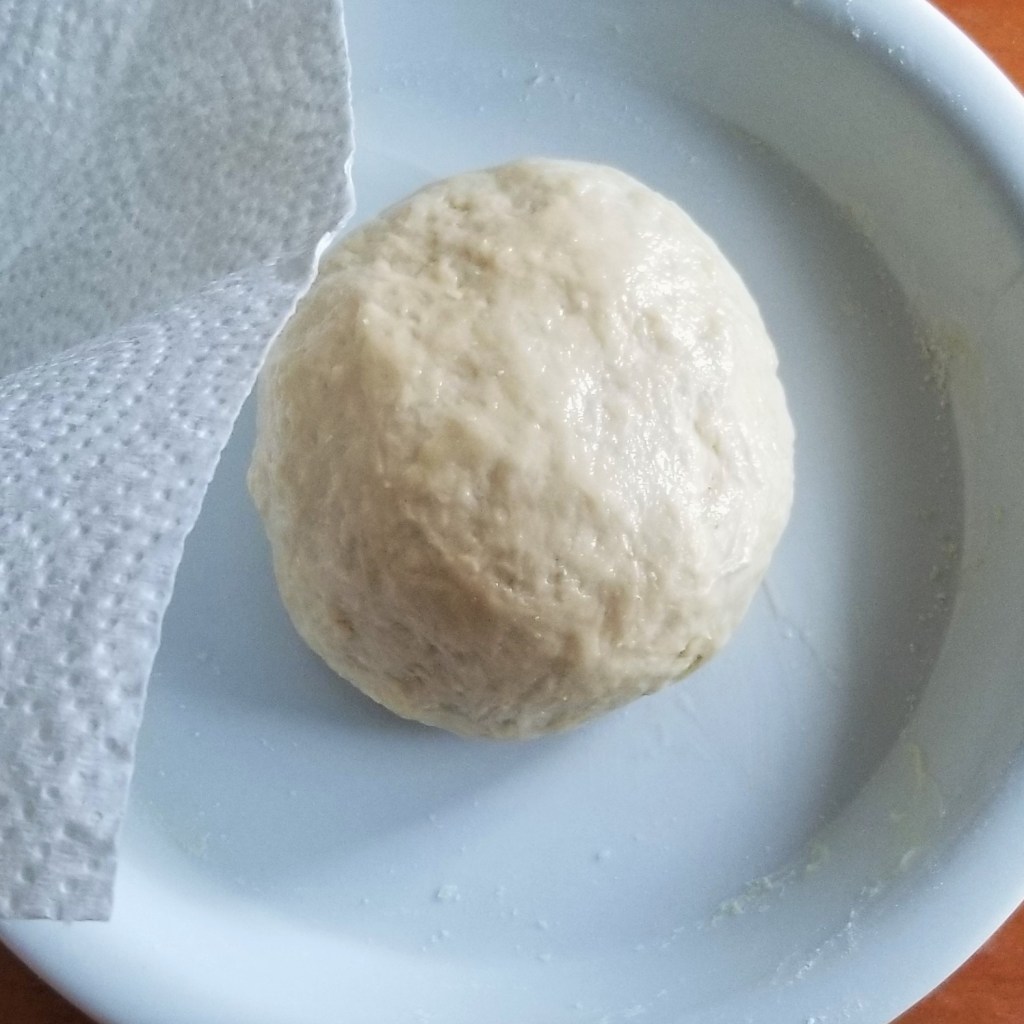
Cover with a towel and allow to rest for about half an hour.
Meanwhile, prepare the syrup. Place piloncillo (or raw sugar), orange rind (if using), cinnamon stick and water in a pan:
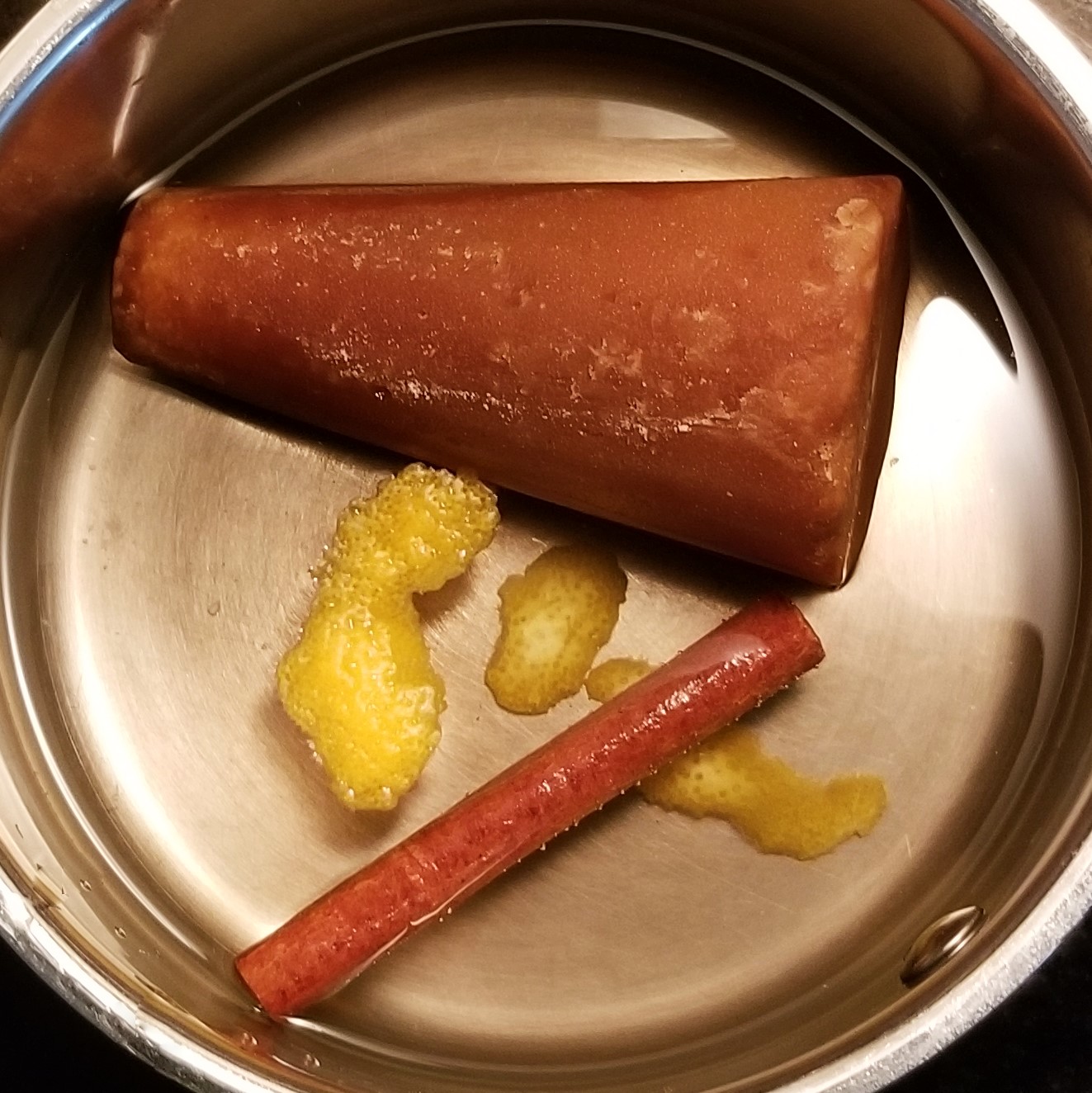
Bring to a boil over high heat, then reduce heat to medium and cook, stirring, until reduced to a sticky syrup, approximately twenty minutes. Remove from heat and reserve.
Uncover dough; it will be soft and smooth. Divide into twelve portions; work with one portion at a time, by rolling into a ball, flattening into a thick disc between hands or using a rolling pin (photo below, left). Place the flattened portion on a towel covering an upside-down bowl with a rounded bottom, and gently pull the edges of the dough away from the centre (photo below, right):


Continue pulling all around the dough, to form a thin disc (photo below, left). I like finishing the disc to a uniform thickness and well-rounded shape with the rolling pin (photo below, right):
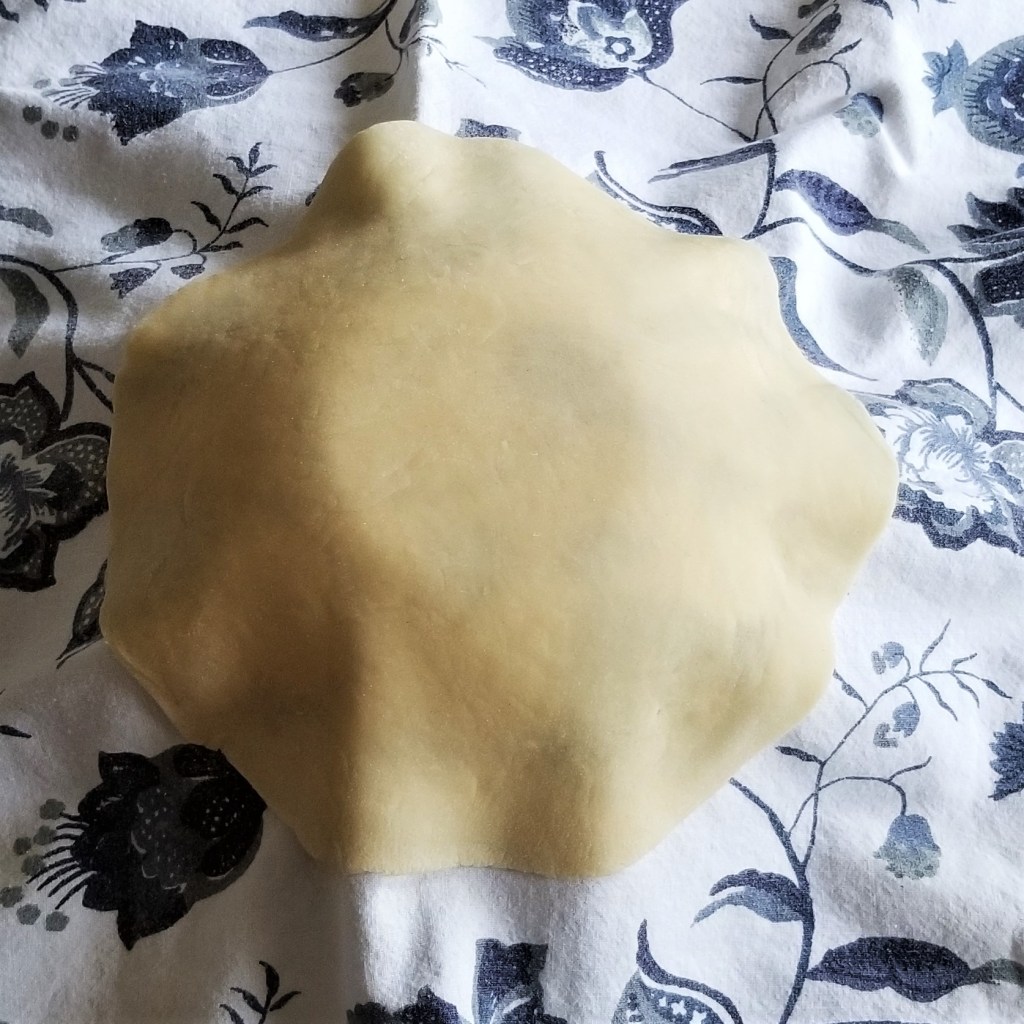
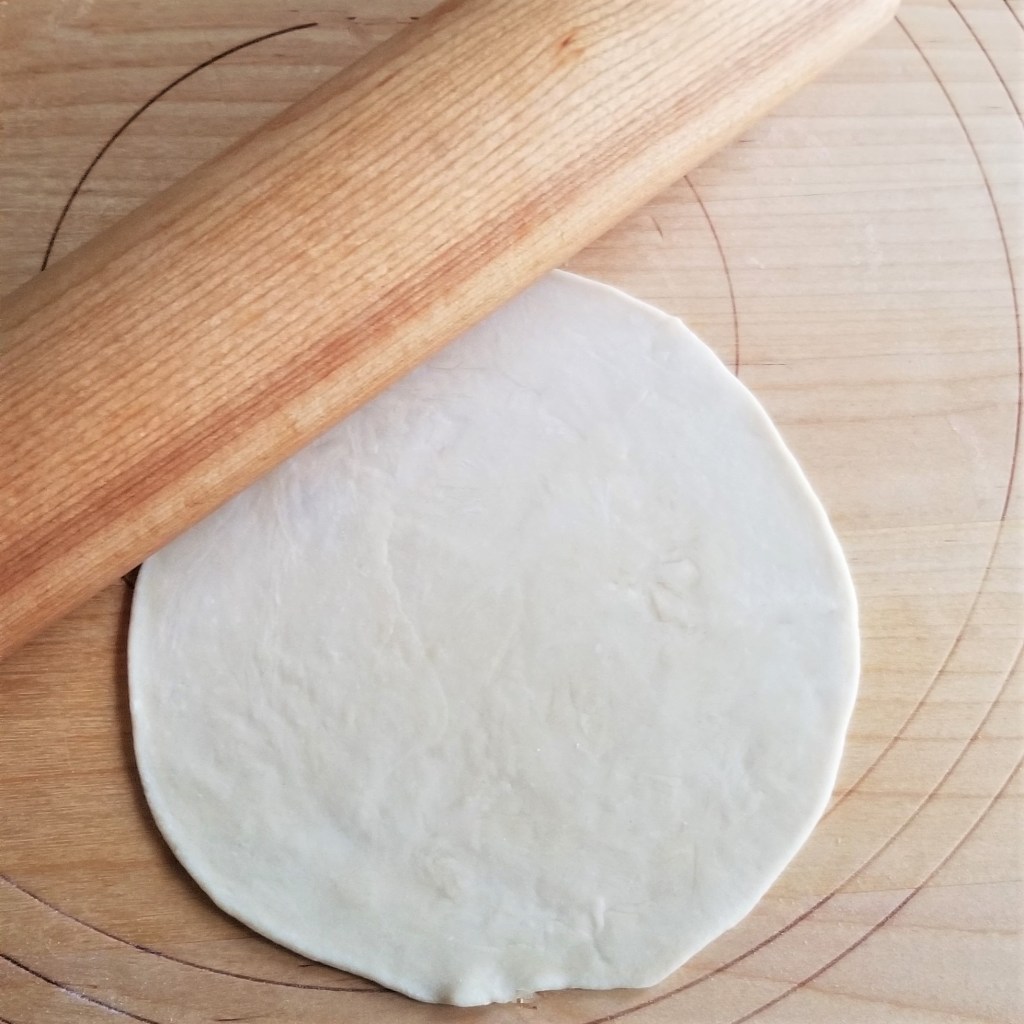
The discs should be at least 7 inches (18 cm) in diameter. Repeat with the rest of the portions:
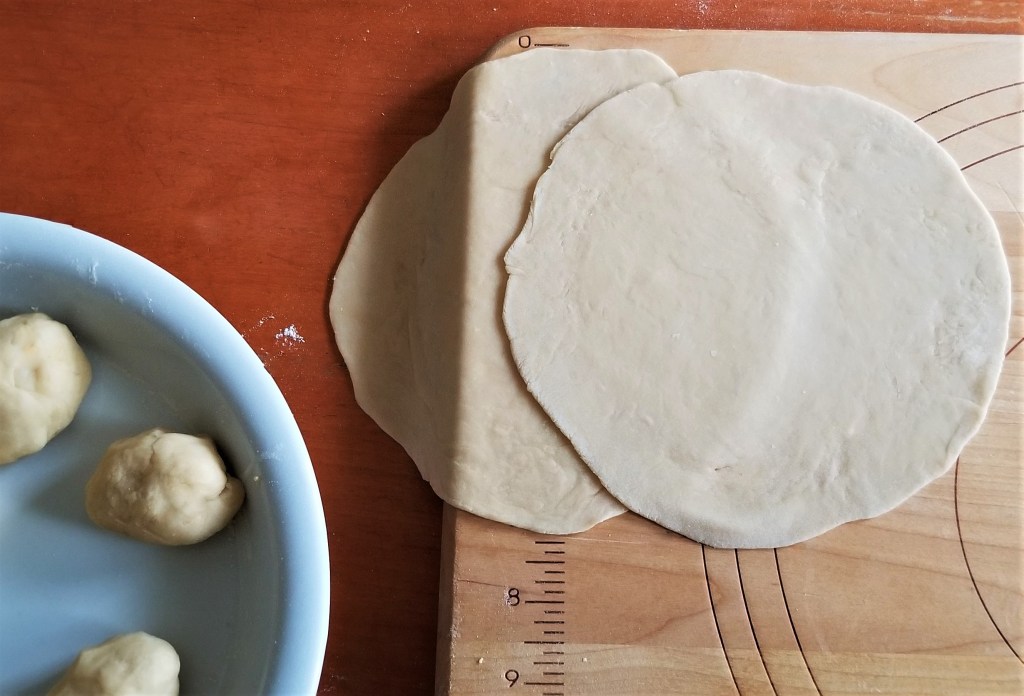
Place finished discs on kitchen towels, as shown below. Notice how the print on the towels may be seen through the thinned dough:

Prepare a large pan with about half an inch of oil (or melted lard); the pan should be wide enough to fit one disc. Warm up over medium-high heat. Carefully slide a disc, flat into the oil; it should start sizzling and bubbling (photo below, left). Cook until golden brown, about twenty seconds, then flip (photo below, right):
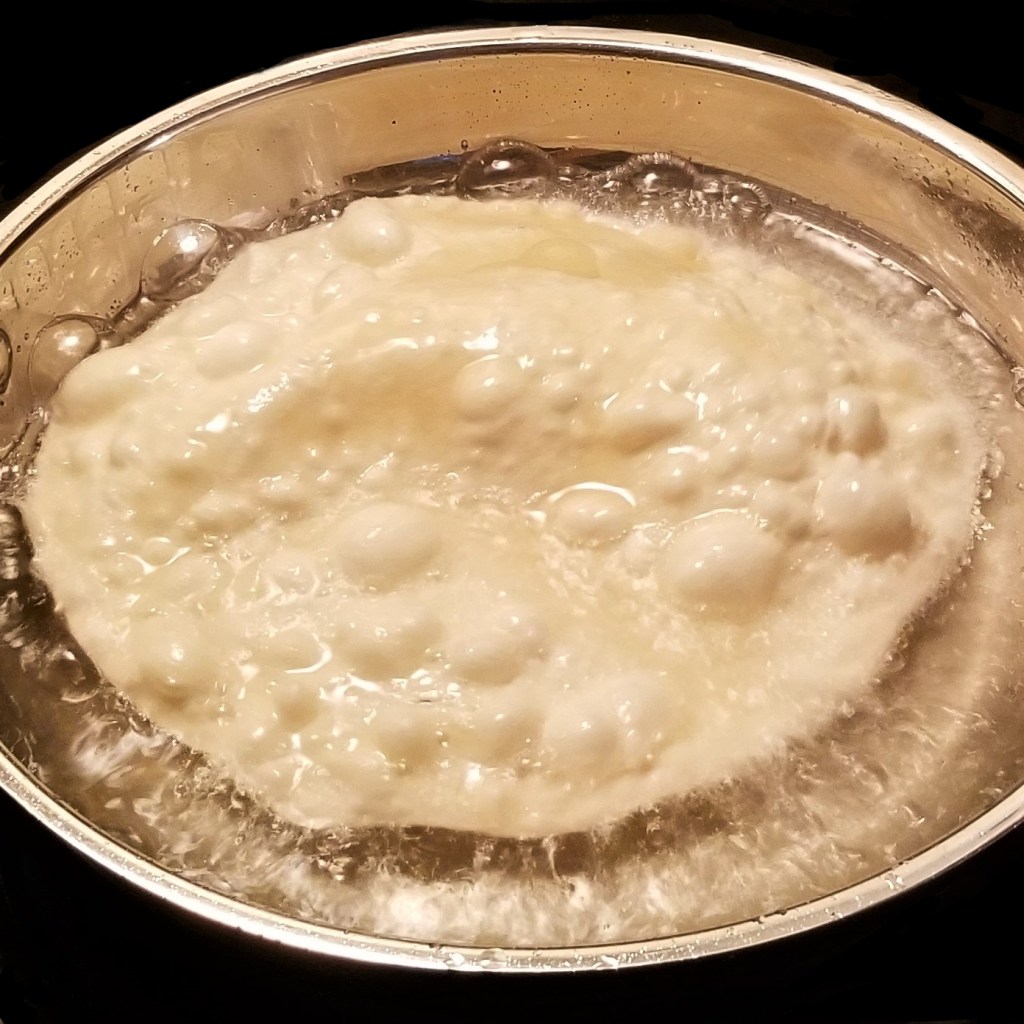
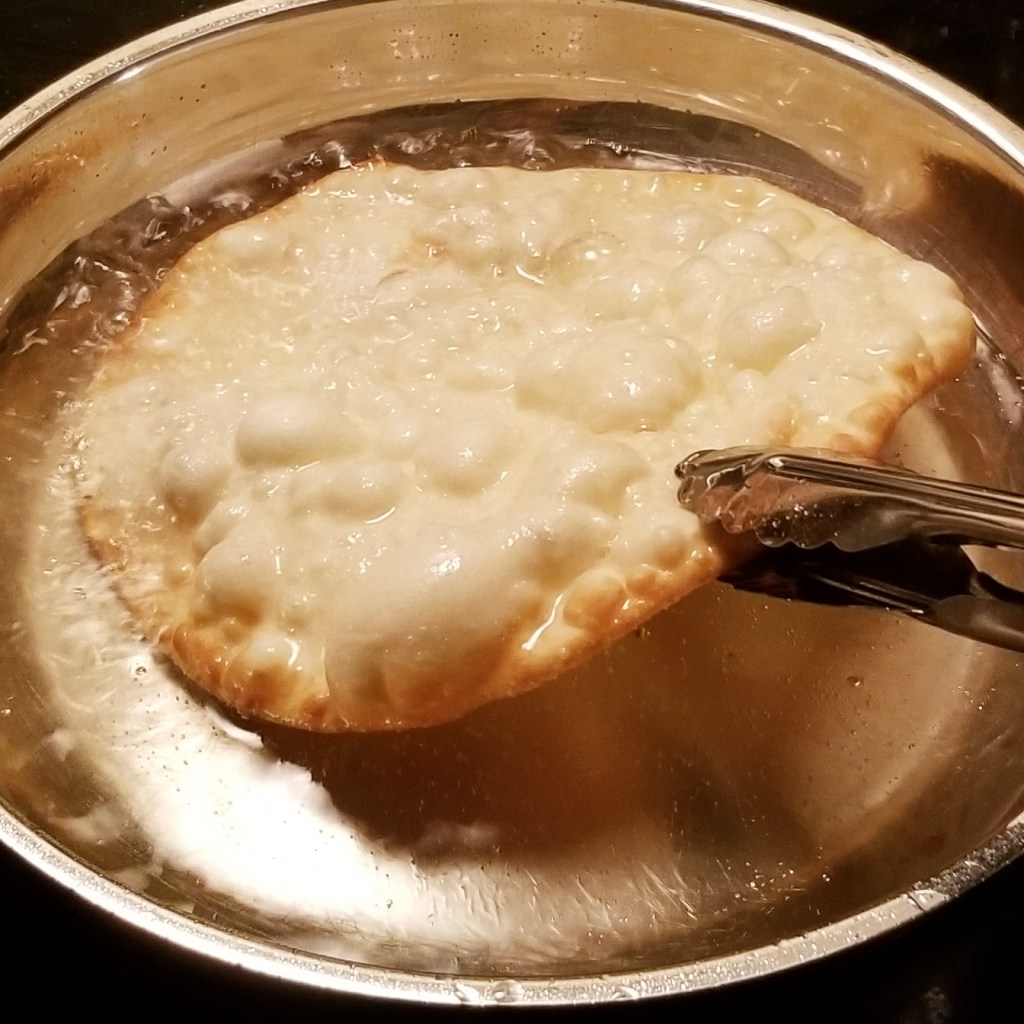
After another few seconds, once the second side has turned golden brown, transfer to a tray or plate lined with paper towels. I like to use a thick brown paper bag folded into an L-shape against the back of the stove, and cover it with paper towels; that way, I can prop the crispy discs vertically, so they do not absorb the dripping oil and become soggy (photo below, left). Continue frying the discs, one at a time. Sprinkle with sugar, and optionally with a little cinnamon (photo below, right):

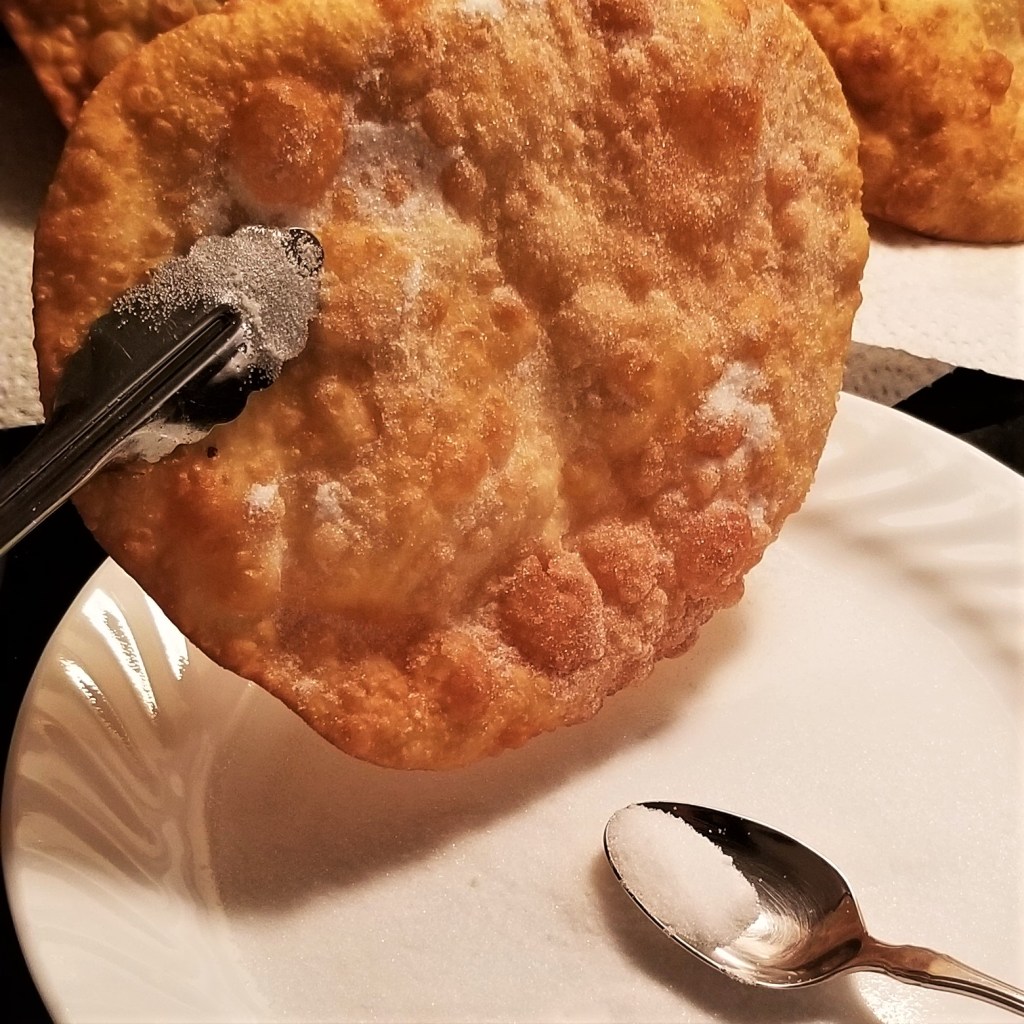
Serve hot or at room temperature, drizzled with syrup, or brake into a bowl with a generous portion of syrup (photo below, left), for some good dipping (photo below, right):




I am sharing my recipe at Thursday Favourite Things #469, with Bev @ Eclectic Red Barn, Pam @ An Artful Mom, Katherine @ Katherine’s Corner, Amber @ Follow the Yellow Brick Home, Theresa @ Shoestring Elegance and Linda @ Crafts a la Mode.
I am bringing my recipe to Full Plate Thursday #515 with Miz Helen @ Miz Helen’s Country Cottage.
I am also sharing at Fiesta Friday #359 with Angie @ Fiesta Friday, co-hosting this week with Jhuls @ The Not So Creative Cook.
I am joining What’s for Dinner? Sunday Link-Up #294 with Helen @ The Lazy Gastronome.
I am sharing my recipe at Over the Moon #256, graciously hosted by Bev @ Eclectic Red Barn, and Marilyn @ Marilyn’s Treats.








Gah! I just had dinner and now I’m hungry again lol. This is a delicious post!
LikeLiked by 1 person
Thank you, Mason!
LikeLiked by 1 person
When I taught Spanish to jr high school students, I made imitation buñuelos by heating corn tortillas in an electric fry pan and adding sugar and cinnamon. That was fun, they enjoyed it.
LikeLiked by 1 person
Some people deep fry wheat tortillas or wonton wraps, too. These are not too hard to make, though, especially just once a year, and they are soooo yummy 😋
LikeLiked by 1 person
Yummy! I think I have actually had these before. 😀
LikeLiked by 1 person
That looks like an engineering marvel and a taste sensation, Irene. Perfect for a cold night.
LikeLike
Thank you, Tracy! Yes, they are so good and comforting.
LikeLiked by 1 person
A Texan friend taught me to make these many years ago. I don’t think we made them quite so thin, but equally delicious!
LikeLiked by 1 person
Such a special festive menu!
LikeLiked by 2 people
Thank you!
LikeLiked by 1 person
Just an ethnographic note: I originally intend on doing my fieldwork in Spain, and one of my advisors noted that recent ( late seventies) historical and ethnohistorical research was indicating that some things like Pastorales and dancing in the church that was commonly believed to be New World additions may date back to some regions of Spain ( I think Extremadura was mentioned). That aside your house will certainly be on my holiday visiting list should I ever get the opportunity to go back to Canada. Yum!
LikeLike
Yes, it is now known that outdoor plays with biblical themes were used in Europe to educate the mostly illiterate congregations as far back as the Middle Ages. Where did you end up doing your fieldwork? Once the pandemic is over, “mi casa es tu casa”!
LikeLike
********************************************************
Thank you for sharing at #OverTheMoon. Pinned and shared. Have a lovely week. I hope to see you at next week’s party too! Please stay safe and healthy. Come party with us at Over The Moon! Catapult your content Over The Moon! @marilyn_lesniak @EclecticRedBarn
********************************************************
LikeLike
Thank you, Marilyn, and thank you for hosting!
LikeLiked by 1 person
Irene,
I always love your stories and these fired pastries look amazing. Congratulations, you are being featured on Over The Moon Linky Party. I hope to see you there. https://www.eclecticredbarn.com/2020/12/over-moon-linky-party_26.html
Hugs,
Bev
LikeLiked by 2 people
Wow, thank you so much, Bev, see you there!
LikeLiked by 1 person